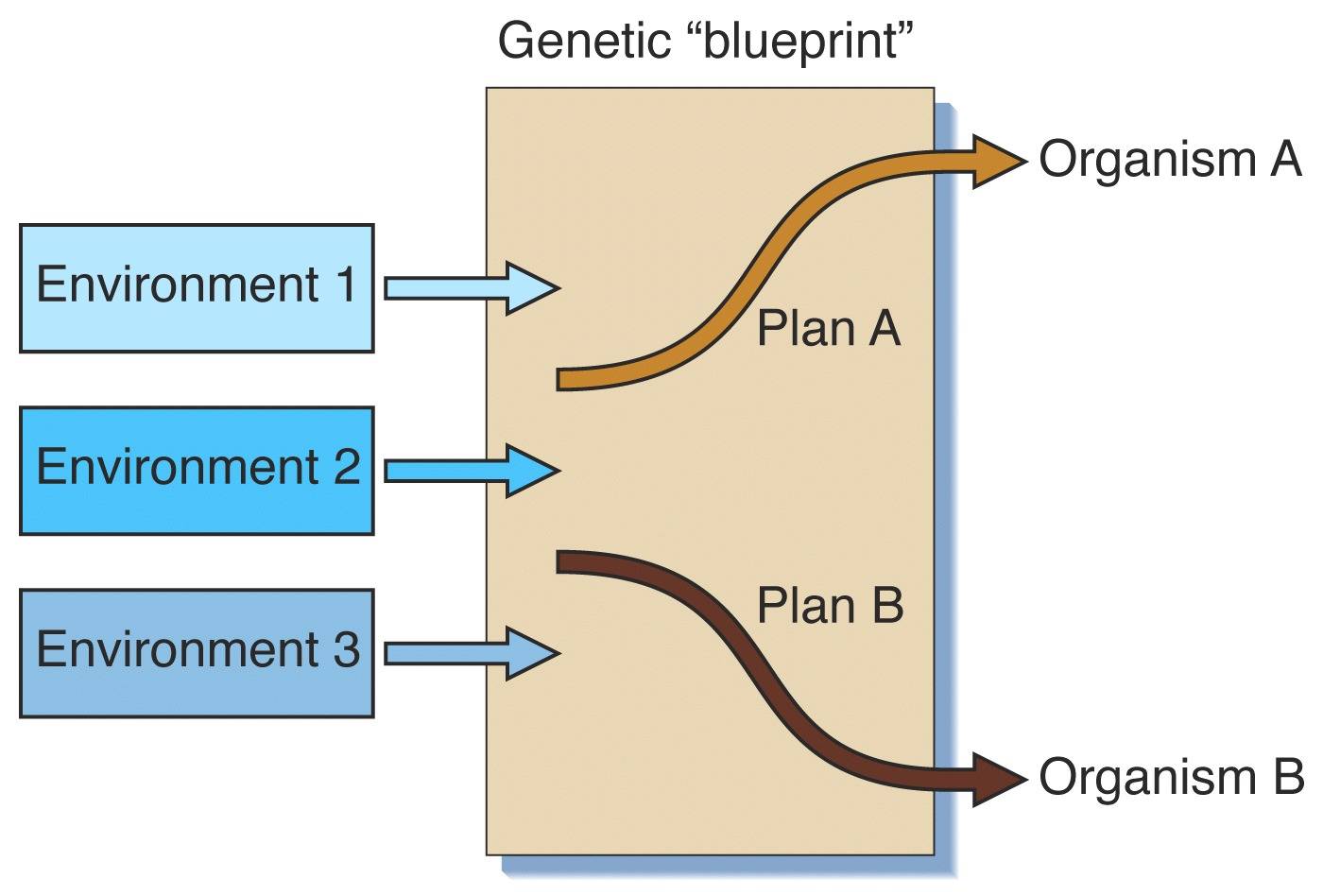


Three Models of genetics, environment, and their interaction
Model I: Genetic Determinism
Plans A & B
correspond to alternative genotypes. Under any of a wide variety of
Environments (1, 2, & 3), these genotypes will determine the course
of a zygote in development to produce alternative phenotypes,
corresponding to Organisms A & B. For example, persons conceived
with a Trisomy-21 karyotype [Plan B] will have Down Syndrome,
regardless of pre- or post-natal environment.
Model II: Environmental Determinism
Environments A &
B include suites of factors that predispose organisms one way or
another. Depending on which particular factors are present, the genetic
program make take any zygote and produce alternative phenotypes,
corresponding to Organisms A & B. For example, although genetic
makeup predisposes humans to be able to use language, persons born in
Iceland [Environment A] are likely to grow up speaking Icelandic,
regardless of their ethnic background.
Model III: Genotype - Environment interactionAlternative
Genotypes A & B interact with Environments I & II to produce a
range of organismal phenotypes, which are not necessarily predictable.
If the phenotypic value of Organism AI > BI > AII > BII, note
that Environment I always produce a superior type to Environment IIl,
and Genotype A always produces a better phenotype than B in any one
environment. However, Genotype B in Environment I is superior to A in
II. Prediction of the phenotype requires a knowledge of both genetics
and environment.
Figures ©2002 by Griffiths et al.; all text material ©2006 by Steven M. Carr